| Share |  |
 | |||
Health Gain - Weight Loss - Part 2 - "Eat More Often!"
 Are you tired of losing the same five, ten or twenty pounds over and over again? Do you ever wonder why each attempt to take off pounds seems more difficult and unsuccessful than the previous attempt?
Are you tired of losing the same five, ten or twenty pounds over and over again? Do you ever wonder why each attempt to take off pounds seems more difficult and unsuccessful than the previous attempt?
Understanding how metabolism works in relationship to weight loss or weight gain can provide effective strategies for conquering this uphill battle that often becomes a greater struggle with each passing year.
Weight-Loss Myths
One of the many myths people tend to believe in regard to weight loss is that eating less helps you lose weight. However, the way in which our bodies were designed to burn calories for energy or store calories as fat is a bit more complex.
Health and fitness experts agree that:
Eating too few calories actually contributes to weight gain.
It sets off processes in the body that impair the way metabolism functions. As was pointed out in last month’s article, calorie restricted diets increase the amount of fat the body stores while reducing the amount of muscle mass required to burn calories for energy.
Learning to Work With Metabolism
We tend to think of metabolism in terms of being inherently “fast” or “slow.” You may have heard it said, “I just can’t lose weight because I have such a slow metabolism,” or “It’s easy for her to stay thin – she is just blessed with a fast metabolism.”
 The truth of the matter is no one is “stuck” with a certain type of metabolism, neither are we at the mercy of our genes when it comes to weight, (as we will further explore in next month’s article.)
The truth of the matter is no one is “stuck” with a certain type of metabolism, neither are we at the mercy of our genes when it comes to weight, (as we will further explore in next month’s article.)
As we learned in last month's article:
Metabolism is the rate at which the body burns calories in order to meet its energy demands.
It involves a host of interactions between various hormones and chemical messages that originate in the brain, gut and fat cells. What causes disruption to these metabolic interactions can be traced to factors that involve the diet, habits and lifestyle of the individual.
It is to our advantage to better understand the inner workings of this basic process in order to learn how to best work with our metabolism rather than it working against us. Applying this knowledge will avert the common pitfalls of traditional and fad “dieting”, which throw off metabolism, increase appetite and make unwanted pounds even harder to lose.
It is possible to“reboot“ metabolism and avoid commonly made mistakes that cause it to be slow and inefficient.
What Makes Weight So Difficult to Lose
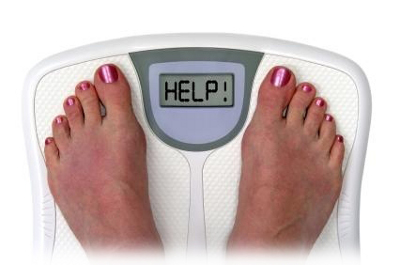 There are good reasons why losing weight is such an uphill battle. The primary one is that our bodies were designed to put on weight as a means of survival. Since food is the fuel that provides needed energy to run all of the body’s essential functions, the body does not consider a reduced amount of calories in its best interest. Therefore, it would just as soon keep as much weight around as possible to ensure sufficient reserves are available should they be needed.
There are good reasons why losing weight is such an uphill battle. The primary one is that our bodies were designed to put on weight as a means of survival. Since food is the fuel that provides needed energy to run all of the body’s essential functions, the body does not consider a reduced amount of calories in its best interest. Therefore, it would just as soon keep as much weight around as possible to ensure sufficient reserves are available should they be needed.
The body’s Resting Metabolic Rate (RMR) is a term that refers to the minimum number of calories required to run the basic processes of the body that occur when an individual is at complete rest, such as breathing or pumping blood. If you eat fewer calories than what is needed to maintain this level, the body reacts by defending itself against what it perceives to be a threat to its survival. Since it does not know how long this “famine” will last, it protects itself from “starvation” by storing as many calories as possible as fat to avoid burning them for energy.
Because the goal of the body is to protect its coveted energy stores, it constantly evaluates the balance between what it takes in (supply) and what it uses (demand). It then makes its assessments of how much to keep in reserves based on the average calorie intake and activity level of the individual.
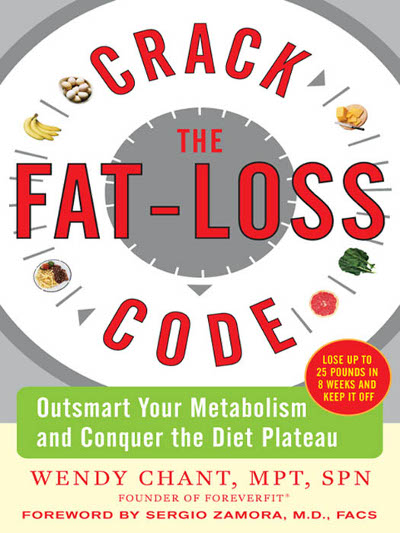
In her book, Cracking the Fat Loss Code, Wendy Chant refers to this baseline developed by the body as the “Perceived Efficiency Rate” or PER. Once the body figures out this rate, it then calculates every few days how to meet energy needs by burning the least amount of calories possible in order to hold onto the greatest amount of reserves for later use. Anytime it does not receive what it thinks it needs to properly maintain its functions, it engages what is often referred to as its “starvation protection mechanism” and “ups” the level of reserves. This translates into increased fat stores.
The way in which the body adjusts as it seeks to maintain balance between the amount of food it takes in and the amount of energy it expends accounts for what is referred to as “dieter’s plateau”. A person may initially lose weight by reducing their calories and/or increasing their activity level. The body then calculates the PER and figures out how to use less of its intake in order to survive and still run efficiently.
Since this “adaptive response,” as it is sometimes called, typically involves burning less calories and storing more fat, the individual will inevitably hit a plateau in which weight refuses to budge. The body has adjusted to a different level of calorie intake and consequently forms a new “set point.” This explains why many overweight people insist they really don’t eat that much—yet still can’t seem to lose weight.
Fat Cells Versus Muscle Tissue
Before continuing further with how to best overcome this tendency of the body to protect itself by storing fat, it may first be helpful to understand more concerning the differences between fat cells and muscle mass.
Building muscle mass and shrinking fat cells needs to be the main goal as opposed to just losing pounds.
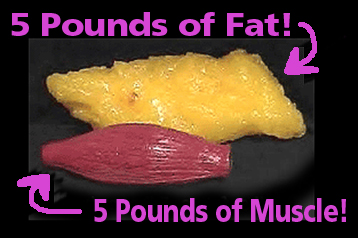 Since muscle is dense and weighs more than fat, a person could drop an entire clothing size yet still weigh more from increased muscle mass. However, increasing muscle tissue is the best way to raise the metabolic rate and produce a faster, more efficient metabolism. This is because the greater the amount of muscle mass, the more calories are required to support it, which also means more calories are burned for energy and less are store as fat, even when the individual is not engaged in any activity.
Since muscle is dense and weighs more than fat, a person could drop an entire clothing size yet still weigh more from increased muscle mass. However, increasing muscle tissue is the best way to raise the metabolic rate and produce a faster, more efficient metabolism. This is because the greater the amount of muscle mass, the more calories are required to support it, which also means more calories are burned for energy and less are store as fat, even when the individual is not engaged in any activity.
Increasing muscle tissue is the only real way to raise the metabolic rate and produce a faster, more efficient metabolism.
This is because the greater the amount of muscle mass, the more calories are required to support it, which also means more calories are burned for energy and less are stored as fat, even when the individual is not engaged in any activity.
Each pound of muscle burns three times more calories than a pound of fat.
So the last thing you want to happen is to lose muscle weight. Even without engaging in any activity, studies indicate that a person burns an extra 35 to 50 calories per day for each pound of muscle they add to their body. This means an extra 10 pounds of muscle is equivalent to burning an extra pound of fat every 7 to 10 days, without any other changes being made.
Lean muscle is the most critical component of an efficient metabolism.
The larger your metabolic engine, the more calories you burn. On the contrary, a reduced metabolism means not being able to eat as much and burning less calories from fat. Since inactivity and aging causes muscle cells to weaken and decrease, the best way to increase muscle is to exercise. Exercise also stimulates the release of fat (more information on this subject in a future article)
Fat is the storage form of energy. The purpose of fat cells is to store all the excess calories the body does not utilize for energy and to release those calories for energy when they are needed.
A person of normal weight has approximately 30 billion fat cells capable of storing up to 150 pounds of fat, while a typical overweight adult may have as many as 75 billion fat cells. In cases of extreme obesity, this number can climb over 200 billion.
Normally, the number of fat cells a person has is set during childhood and adolescence and remains the same during adulthood. They simply grow in size as they expand, according to the amount of fat the body needs to store.
However, when existing fat cells are filled to capacity, they can multiply to create new fat cells for additional storage. Fat cells never go away, even with marked weight loss. As fat is burned, however, the amount of fat stored within each fat cell decreases and the fat cell will shrink in volume.
The Challenge of the Female Fat Cell
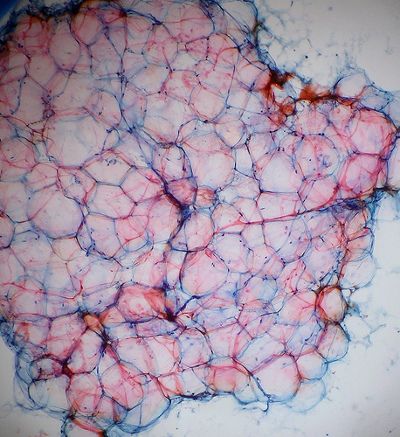 Both the storage of fat and the release of fat are controlled by special enzymes responsible for facilitating the transport of fat in and out of the cells.
Both the storage of fat and the release of fat are controlled by special enzymes responsible for facilitating the transport of fat in and out of the cells.
Women are at a particular disadvantage when it comes to losing weight as their fat cells contain a greater quantity of “lipogenic” enzymes, the type which transports fat into the cells for storage. By possessing more of these enzymes, their fat cells become larger and more difficult to shrink.
Men, on the other hand, are able to burn fat easier than women since they possess more “lipolytic” or fat releasing enzymes.
Why the Difference?
A primary reason for this difference is that the body of a woman was designed to store fat for many months in preparation for bearing children.
Another reason is that a women’s body has more estrogen, which activates and multiplies these fat-storing enzymes, whereas lipolytic (fat releasing) enzymes are activated more by testosterone. This helps explain the increased fat that typically occurs during puberty, pregnancy, or when additional estrogen is introduced to the body through oral contraceptives or hormone replacement therapy.
A further disadvantage women face in the “battle of the bulge” is the fact that estrogen causes the fat cells in the area of the hips, thighs and buttocks to be larger and especially efficient in storing fat. It is little wonder that these areas of the body are so resistant when it comes to the loss of fat.
And if these disadvantages were not enough:
Women are known to have 40% less muscle tissue than men.
This further slows down the rate at which calories can be converted to energy. Instead, calories are being stored as fat.
No wonder so many women are always dieting!
Why Deprivation Diets are so Detrimental
Studies show that the amount of "fat storing” enzymes increase while the amount of "fat releasing” enzymes decrease—with each successive diet.
That makes it more difficult to lose weight and easier to gain it back.

Before you consider going on another deprivation diet, consider what typically takes place in the body as a result of repeated dieting:
- “Starvation protection mechanism” is set off in response to what the body perceives as a threat to its survival, triggering the release of fat storing enzymes.
- Fat storing enzymes are increased (by as much as 50% in woman), making fat cells larger, stronger and more efficient at storing fat.
- Valuable muscle tissue is broken down, reducing the amount of calories burned for energy as well as the body’s ability to efficiently burn excess fat.
- Fat releasing enzymes are reduced, lowering the ability of the body’s metabolism to efficiently burn fat by as much as 50%.
- Changes in body composition occur (decrease of muscle mass/increase of fat tissue), which biochemically alters the body.
- Increased fat tissue in the body increases risk for heart disease, cancer, diabetes and other diseases.
- Calorie reduction creates hunger signals too strong to resist, leading to bingeing and rebound weight gain.
When people diet and lose weight, they lose approximately half fat and half muscle.
But, when they regain it—the weight is almost exclusively in the form of fat.
This is because each successive diet increases the size and amount of fat cells and lowers the speed and efficiency of metabolism.
As Debra Waterhouse says in her book Outsmarting the Female Fat Cell, “dieting is the female fat cell’s best friend.”
A Strategy for Outsmarting Your Metabolism
Timing is important. Knowing when and how often to eat can keep your metabolism revved up—to burn fat and preserve muscle.
Fat is used for energy and metabolically active muscle tissue is kept intact.
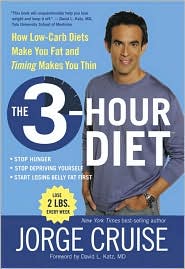 According to Jorge Cruise, author of The 3 Hour Diet, creating a consistent eating schedule is an essential part of losing weight and keeping it off.
According to Jorge Cruise, author of The 3 Hour Diet, creating a consistent eating schedule is an essential part of losing weight and keeping it off.
Eating at the wrong times slows your metabolism and creates weight gain over the long term.
When more than three hours elapses after eating, the “starvation protection mechanism” of the body kicks in, causing the body to conserve fat and start to burn lean muscle tissue.
This fitness expert also claims that eating every three hours forces the body to turn off this mechanism and turn up metabolism. It also increases the body’s “fat burning” enzymes while at the same time decreasing the “fat storing” enzymes.
In his book, Jorge Cruise cites studies conducted with Olympic athletes who timed their meals and snacks versus those who did not. Those who ate more frequent meals were stronger and faster. In addition, frequent meals increased their energy level, alertness, and muscle mass.
The same studies also showed that the athletes who went longer between meals had a higher percentage of body fat and a greater loss of muscle tissue— whereas the ones who ate frequent meals lost almost all fat tissue.
How Eating More Often Benefits the Body
Eating often supplies nutrients needed by the body to build muscle— in addition to preventing the type of hunger that creates cravings strong enough to cause a person to overeat.
Studies conducted in the Netherlands with obese women showed that those who ate more frequently had greater levels of leptin, a hormone produced by fat cells that plays a vital role in suppressing appetite.
Eating more often supplies a steady flow of glucose and key nutrients which feed muscle and brain tissue.
- This in turn boosts energy, enhances brain function and keeps moods stabilized.
- Spikes in insulin levels are also averted, keeping blood sugar levels balanced and preventing insulin resistance that leads to diabetes and other health conditions.
- Avoiding high peaks of insulin, caused by eating larger meals less often, also helps to lower levels of fat and cholesterol in the bloodstream.
Studies published in the New England Journal of Medicine showed:
Eating every three hours reduced levels of the stress hormone cortisol.
High cortisol levels are closely associated with abdominal fat as well as health conditions such as adrenal fatigue.
Guidelines for the Basic Plan
Most weight loss and fitness experts agree:
Eating five to six smaller meals per day or three meals and two healthy snacks is the best way to boost metabolism as well as control appetite.
Eating more often helps you avoid overeating because you don’t allow yourself to become hungry. Skipping meals, especially breakfast, is disastrous to an efficient metabolism.
Eating a healthy breakfast returns blood sugar levels to normal and primes the metabolism to function on an even keel the rest of the day.
According to studies, breakfast provides a greater sense of fullness than foods eaten later in the day, which works to lower overall calorie consumption.
The following old saying holds great wisdom for weight control:
“Eat breakfast like a king, lunch like a prince and supper like a pauper.”
 The basic plan in The 3-Hour Diet book is simple, yet extremely effective for helping to achieve and maintain a healthy weight. To help people successfully implement this type of routine, the author strongly recommends writing out an eating schedule as a visual aid. The schedule may vary with each individual but should be based, as much as possible, on the following criteria:
The basic plan in The 3-Hour Diet book is simple, yet extremely effective for helping to achieve and maintain a healthy weight. To help people successfully implement this type of routine, the author strongly recommends writing out an eating schedule as a visual aid. The schedule may vary with each individual but should be based, as much as possible, on the following criteria:
- Eat breakfast within one hour of rising.
- Eat every three hours.
- Stop eating three hours before bedtime.
It is also advisable to consume the majority of calories in the first two-thirds of the day, as calorie needs are lowest at night. The body slows down metabolism during sleep to focus on healing and repair. The calories from undigested food left in the system will go to fat stores, especially if there is heavier eating in the evening.
Conclusion
I hope you better understand why slashing calorie intake, skipping meals and repeated dieting are not effective solutions for achieving a healthy weight.
Those methods, instead, impair metabolism and set a person up to gain even more body fat as time goes by. By eating less more often, you can circumvent your body’s tendency to store calories as fat instead of burning them for energy.
Although making changes to when and how often you eat will not in itself transform your metabolism and size, but will start you on the right path.
Next month we will direct our attention to what we eat and how the right types of food communicate with our genes to impact metabolism
In Summary:
- The body was created to “survive” and will store calories as fat rather than burn them for energy when it perceives any reduction in food intake.
- Calorie-restricted diets impair metabolism and contribute to weight gain over the long term.
- Increasing lean muscle mass should be the goal--more so than the loss of pounds-- as muscle burns three times as many calories as fat-- as well as increasing the body’s resting metabolic rate.
- It is more difficult for women to lose weight since their fat cells have more “fat storing” enzymes and they have less muscle tissue than men.
- Repeated dieting alters a person’s body composition and metabolism-- in addition to increasing their ability to store fat and reducing their ability to lose fat.
- Changing when and how often you eat can “reset” your metabolism and deter your body’s tendency to build up fat reserves.
- Eating every few hours produces a number of health benefits to the body in addition to regulating metabolism and weight.
Sources:
- Cracking the Fat Loss Code by Wendy Chant
- Outsmarting the Female Fat Cell by Debra Waterhouse
- The 3-Hour Diet by Jorge Cruise
- Ultrametabolism by Dr. Mark Hyman
Copyright © 2008-2015 Lucinda Bedogne, CNHP, CNC
Post Your Comment...
|
|
||||||||||||


